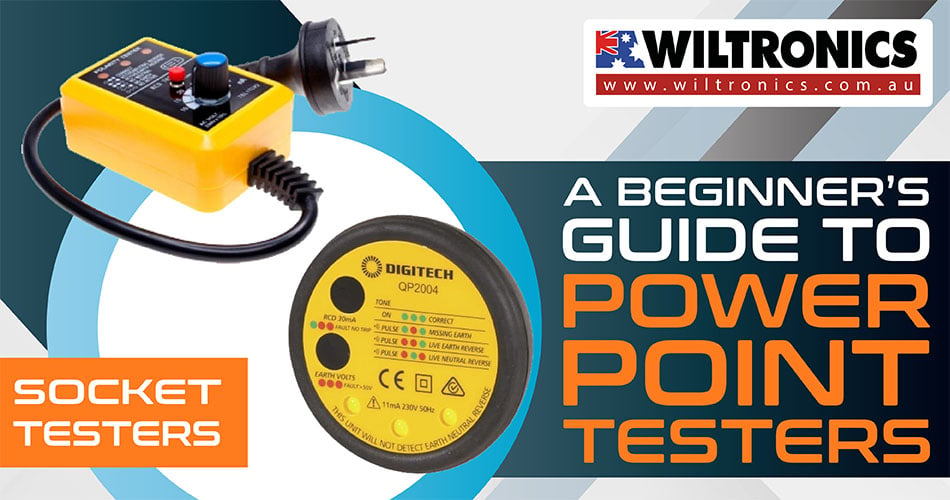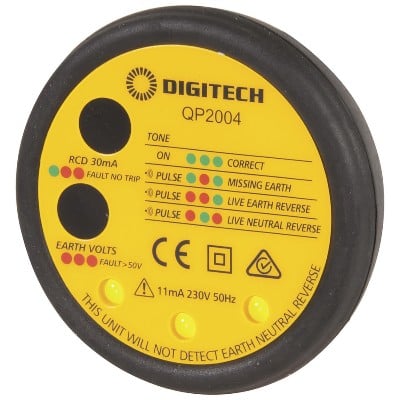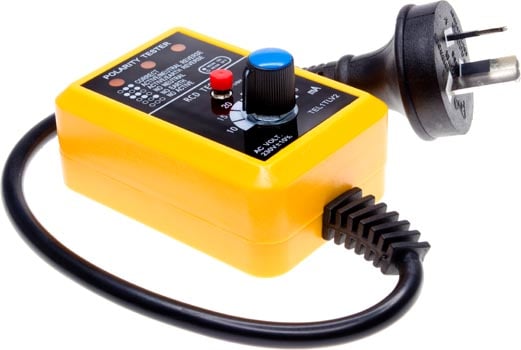A Beginner’s Guide to Power Point Testers (Socket Testers)
January 24, 2023

When electrical issues arise at home, these power point testers will come in handy.
Multimeters make excellent voltage-reading devices. If one is not an option, you can use a voltage detector in its place. And if an electrical receptacle failure occurs in your home, diagnose it by running an outlet test.
This is where power point testers come into play. Ideal for checking voltage, amperage, continuity, shorted or open circuits, and improper wiring. Use this beginner’s guide to learn how to conduct such tests using one.
Power Point Testers (Socket Testers)
Learning how to measure voltage and conduct a polarity test, to name a few, is a part of electrical wire work. A common dilemma many homeowners face is whether the power is reaching an outlet or not.
Fortunately, there are ways to test and diagnose those outlets. One is through the use of power point testers, also known as socket testers. A socket tester is a portable device used to test power outlet sockets, hence the name. It allows for checking correct operation and wiring standards.
This handheld tool can also plug into the mains or via an attached plug connected by a lead. Most display test results on an array of LEDs, while some also allow for an earth leakage test with a button push.
High-end socket tester units come with extra functionality. For one, a ground loop impedance – which is one of the most critical factors for safe socket functioning. Some have a ground fault test button that is also a crucial safety function of socket circuits.
Power point testers are configured for two and three-pin 115-230V sockets. Other variants can test high-voltage industrial sockets.
The importance
Power outlet sockets are the first line of contact between the power grid and the consumer. They are commonplace in most domestic and commercial settings. Thus, making their operation correct and safe is an important consideration. Ideally, tests should be carried out on a regular basis to check for faults.
Terms to familiarise yourself with
- Amperage. The ampere, a.k.a. amp, is the measure of the amount of electric charge in a current. The larger the amperage is, the greater the quantity of the electrical charge.
- Voltage. The strength or pressure that pushes the electricity and is short for (V). The higher voltages are, the more electricity flows to an electronic device.
How Do Power Point Testers Work?
A power point tester contains a microprocessor connected to a conductor circuit. Once plugged into the socket, the processor will analyse the current flow. It can also assess the continuity and the polarity of the connections that come into contact.
The tester will check whether each contact is connected to the correct wire. These include the ground, neutral and live feeds. Any wiring fault detected will be displayed through LEDs and tones. The LEDs will give an immediate sign of such relevant conditions.
How To Use It
Using a socket tester does not need significant training. However, familiarity with electrical wiring principles can be beneficial. Generally, this is how you can use the unit for power and wiring faults:
- Switch off the socket
- Remove any plugs or devices from the mains socket
- Insert the socket tester
- Switch the power back on and wait for the results
Should all three LEDs illuminate, no faults have been detected. Keep in mind that faults display can vary depending on the models and manufacturers. Some show lighting of the LEDs in particular sequences or colours. Others have alert sounds.
Types of Power Point Testers
A variety of designs for power point testers are available. Most units use LEDs, while others feature front-panel displays. Three-, four- and five-pin models are also on the market. All in all, socket testers fall into three categories:
- Simple
- Advanced
- Professional
Simple
Regular power point testers can detect wiring fault conditions in outlet sockets. They usually have the same size as a standard 13-amp plug.
In most models, faults are signalled by 3 bright LEDs. The diagnosis chart for typical errors is also included on the label next to the LEDs. Two green LED signal identifies a correctly wired socket, while three red ones are deemed as a fault. If either the green or red LED fails to light, it will require further investigation into the fault.
Take this Power Point and Earth Leakage Tester, for example.

Power Point and Earth Leakage Tester
Product code: JQP2004
Ideal for assessing the main sockets and earth voltage. Feedback through the buzzer and three LEDs assist you in diagnosing possible issues. These include problems with the wiring, missing earth and neutral, and live faults.
Advanced
As the name suggests, advanced models feature innovative functions. These include earth fault loop impedance readings. With this, you can test the amount of resistance encountered by the faulty current.
Professional
Like advanced power testers, you can measure earth loop impedance with professional units. They come with digital displays, are bulkier and usually have a separate plug and power cord.
If you are looking for one, consider the model below:

Power Point Tester
Product code: ME4000
This handy tool lets you test polarity, earth connection and incorrect wiring. Plus, run a test on the earth leakage and circuit breakers to ensure they are safe to use. Perfect for professionals alike.
The Bottom Line
Professional electricians make use of electrical testers. DIY homeowners may find them useful, too! Power point testers are among the most common variety. Understanding their functions will greatly expand your expertise when working with wires.
© Electrotech Brands Pty Ltd 2023


Write a Comment
You must be logged in to post a comment.